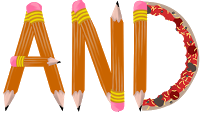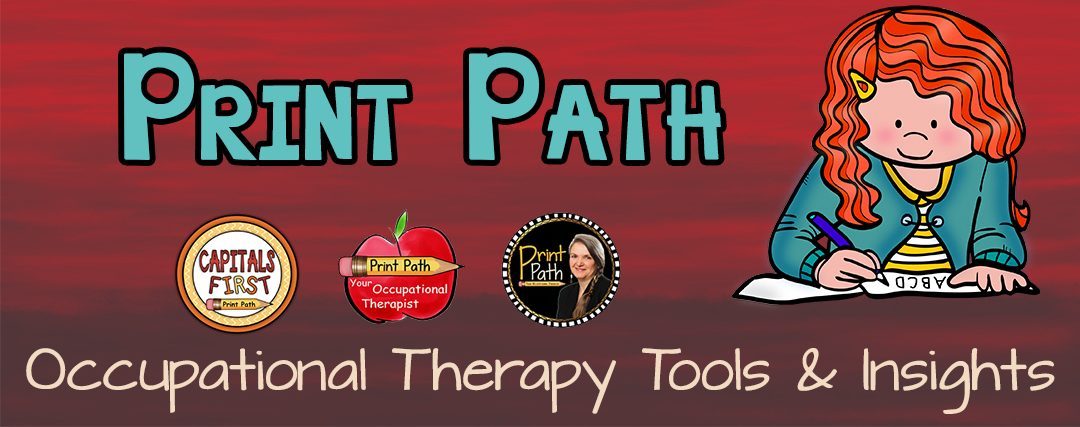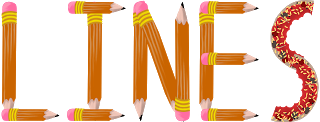Best Practices Behind Teaching Capitals Letters First
It is a year after the
birth of Capitals First blog, and I am just now getting around to writing about
the blog’s name, “Capitals First”. Passionate about
teaching handwriting skills, this is a topic near and dear to my
heart!
birth of Capitals First blog, and I am just now getting around to writing about
the blog’s name, “Capitals First”. Passionate about
teaching handwriting skills, this is a topic near and dear to my
heart!
An unfortunate myth is that
young children, 3 & 4 years old, should learn to write their name with an
initial capital letter followed by lowercase, rather than all capitals.
Research shows that to be incorrect and even detrimental, for several reasons.
young children, 3 & 4 years old, should learn to write their name with an
initial capital letter followed by lowercase, rather than all capitals.
Research shows that to be incorrect and even detrimental, for several reasons.
First off, capital letters
are made with just lines and curves so they are developmentally simpler,
therefore children will have more success early on. The use of lines and curves
to teach capital letter formation is seen in many places but was made popular
by Jan Olson’s Handwriting Without Tears©. Teaching uppercase before
lowercase affords the younger children the time they need to develop critical
perceptual-motor concepts. Teaching capitals first teaches young children the
essential top-to-bottom stroke and builds confidence that they can learn to print (Taras, Brennan, Gilbert, & Reed, 2011)
are made with just lines and curves so they are developmentally simpler,
therefore children will have more success early on. The use of lines and curves
to teach capital letter formation is seen in many places but was made popular
by Jan Olson’s Handwriting Without Tears©. Teaching uppercase before
lowercase affords the younger children the time they need to develop critical
perceptual-motor concepts. Teaching capitals first teaches young children the
essential top-to-bottom stroke and builds confidence that they can learn to print (Taras, Brennan, Gilbert, & Reed, 2011)
 Secondly,
Secondly,when children are expected to form lowercase letters before they are ready to
follow the complex movement patterns they form life-long illegible motor
habits. (Asher, 2006; Sheffield, 1996) The more complex lowercase
letters, which re-trace and shift directions, are sized differently, and put in
differing spatial locations, are impossible for most preschool and
even many beginning kindergarten children to execute. No matter how
excellent the instruction, not all five-year-olds have the underlying spatial
temporal perceptions or visual motor skills to support learning lowercase (Benbow, Hanft, & Marsh, 1992; Beery & Beery, 2010; Daly, Kelley, & Krauss 2003; Marr, Windsor, & Cermak,
2001).
 Thirdly, quality explicit
Thirdly, quality explicitinstruction of lowercase when children are ready, typically in the 5th year,
results in children naturally switching to lowercase use. Moving through a
developmental sequence is healthy and supports later
development. Graham (1992; 2006) describes the difficult task teachers
have in supporting children to un-learn incorrect and inefficient motor
habits. It is the practicing of errors (i.e., incorrect motor learning)
that adds to the child’s and teacher’s workload.
As an Occupational
Therapist I know all too well about supporting children
in unlearning ineffective handwriting habits. Preventing
detrimental habits that have a strong negative impact on
lifelong writing fluency is what I am all about. I am passionate about
bringing fun, engaging, and developmentally appropriate tools to
teachers, parents, and therapists.
Therapist I know all too well about supporting children
in unlearning ineffective handwriting habits. Preventing
detrimental habits that have a strong negative impact on
lifelong writing fluency is what I am all about. I am passionate about
bringing fun, engaging, and developmentally appropriate tools to
teachers, parents, and therapists.
These recent products
I developed are for preschool and
beginning kindergarten children. They are loads of fun
and target essential fine motor and perceptual skills.
I developed are for preschool and
beginning kindergarten children. They are loads of fun
and target essential fine motor and perceptual skills.
This First one “I CAN
MAKE MY NAME” is all about giving kids 5 and under an easy
and accessible way to construct their names with lines and
curves.
MAKE MY NAME” is all about giving kids 5 and under an easy
and accessible way to construct their names with lines and
curves.
Pizzas curves and Pencil
lines are cut [straight line cuts only] and are then glued onto a name frame.
lines are cut [straight line cuts only] and are then glued onto a name frame.
Letter cards activities
include sorting and partner tasks.
include sorting and partner tasks.
Posters can be used to help children
look at and count the big and little lines is each letter.
look at and count the big and little lines is each letter.
Children then make their own nine page
alphabet booklet where they count lines found in each letter. I have
found this skill to be essential for children to
understanding, remembering and then write letters.
alphabet booklet where they count lines found in each letter. I have
found this skill to be essential for children to
understanding, remembering and then write letters.
These classroom books offer
community building opportunities throughout the year.
community building opportunities throughout the year.
At the beginning of the year teachers
may want a name and picture book to be in their class library. This
WELCOME TO OUR ROOM book lets each child ‘write’ their own name. As all names
are completely legible your children will all
feel successful and on an even ground.
may want a name and picture book to be in their class library. This
WELCOME TO OUR ROOM book lets each child ‘write’ their own name. As all names
are completely legible your children will all
feel successful and on an even ground.
The next “Say Hello” books
offer children the opportunity to read names of those most important to them,
and by tuning the page receive immediate
picture confirmation that they did it right!
offer children the opportunity to read names of those most important to them,
and by tuning the page receive immediate
picture confirmation that they did it right!
I have just learned how to publish
editable documents and so now I am able to offer them to you!
The WELCOME TO OUR ROOM and Say Hello books can be changed to
add in the teacher’s name, different phrases or whatever you may
prefer.
editable documents and so now I am able to offer them to you!
The WELCOME TO OUR ROOM and Say Hello books can be changed to
add in the teacher’s name, different phrases or whatever you may
prefer.
Children understand greater
understanding of letters and hold greater quantities in their heads when they
can count the big and little lines in others names. On the
sheet pictured here, you may handwrite names but if you prefer open up the
included PowerPoint file and add your students names using your prefered font.
I personally like a few
handwriting fonts that are free for personal use.
understanding of letters and hold greater quantities in their heads when they
can count the big and little lines in others names. On the
sheet pictured here, you may handwrite names but if you prefer open up the
included PowerPoint file and add your students names using your prefered font.
I personally like a few
handwriting fonts that are free for personal use.

